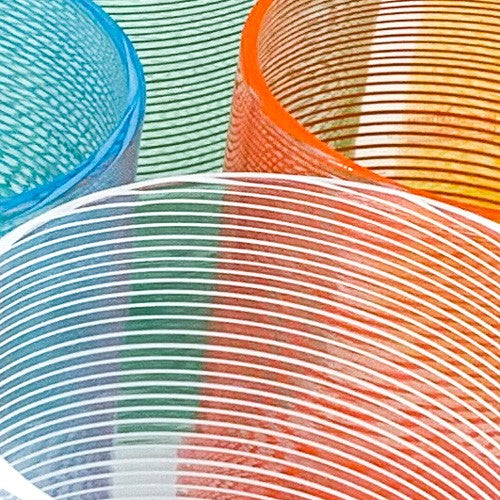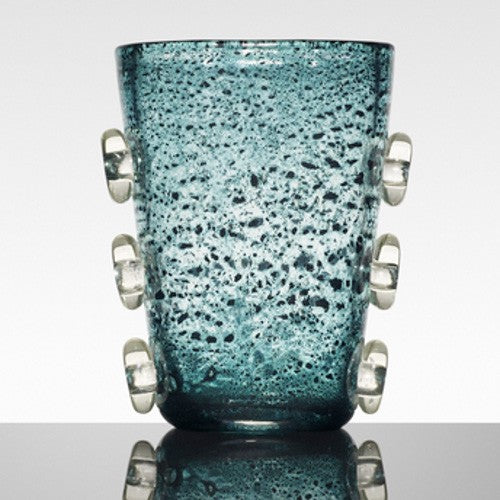One of the oldest traditional processes already in use in the XVI Century.
It is done by applying under heat on the surface of an item a homogeneous series of transparent colourless glass canna , with the core of coloured glass.
The rods are previously arranged on a metal plate, they are heated to the melting point, and a cylindrical item is then made to roll over them, so that they adhere to it. The item is then finished as desired. All the most important Murano glass factories use this technique that lends itself admirably to an extensive range of decorative solutions.
The great maestro Archimede Seguso did extensive research and many experiments during the 50s and 60s to partially model some filigrana parts and then applying them to the items: some very elegant series were designed this way, such as "spiraline", "composizione lattimo", "filigrana stellata", "merletto" vases and still others.




Leave a comment
All comments are moderated before being published.
This site is protected by hCaptcha and the hCaptcha Privacy Policy and Terms of Service apply.